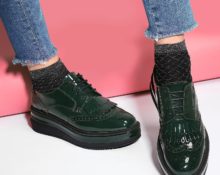
With the right knowledge and education, finding the perfect pair of ski boots is easy online. Most online retailers provide you with all the tools, filters, reviews, information and the latest fitting techniques to help you make the most informed choice about your new ski boots.
Floor
Men's ski boots are designed for men's feet and legs with a taller shaft, slightly stiffer flex, and a wider forefoot shape.
Women's ski boots are specifically designed and constructed with the female anatomy in mind. Women's feet are typically thinner and have a larger tapering shape from the forefoot to the heel. Women's leg shapes tend to be shorter and fuller.
All manufacturers now make women's boots that have a narrower width, narrower heel pocket and shorter, fuller shaft to fit the shape of the foot and leg.
In women, the center of mass is in the hips and back of the body.This forces women to sit back on their heels, which often results in a loss of control of the skis. Most women's boots have some heel lift or forward tilt to compensate for the fulcrum.
Children's boots are much smaller in width, shorter in the shaft and softer in flex to help small, short, light and junior skiers be able to flex, extend and move the boot to give them more control over their skis.
Sizing

Ski boots are measured in Mondo Point size, which is measured in centimeters. The Mondo Point size is determined simply by how many centimeters the length of your foot is. Some manufacturers produce boots and liners labeled from a whole size to a half size, that is, 27.0-27.5.
Most ski boots are only made in half sizes. In half and whole sizes, the shell and liner are the same size. The only difference between them is the thickness of the insole. Inserts and shells are expensive, but insoles are not. The insoles do not provide any support and boot manufacturers and boot fitting specialists recommend replacing them.
Width
There is an ideal boot width for almost everyone. Boot manufacturers have done a great job of creating different boot flex options so you can fit any boot width. Width or “Last” is an old shoemaker's term that nowadays refers to the width of a ski boot in millimeters at the toe.
Last is always measured in reference size. In men's boots the reference size is 26.5, and in women's boots it is 25.5. Typically, as a ski boot gets longer, it becomes slightly wider to accommodate larger feet.For example, a boot with a 100mm last in size 26.5 has a width of 100mm. The same ski boot model in size 31.5 can be sized 108mm for a proportionately larger foot.
- Narrow boots can vary from 95mm-99mm (in reference size), allowing them to be tailored to the shape of the skier's foot. These are typically ultra-high-performance or racing boots.
- Medium width boots typically measure 100mm-103mm (in reference size). These boots are usually classified as performance boots.
- The wide boots are designed for comfort and measure 104-106mm (in reference size). With the exception of a few boots, wide boots are traditionally reserved for recreational skiers.
Skill level
Choosing ski boots that suit your skill level will greatly improve your comfort and performance. The level of craftsmanship matches the flexibility, shape and performance of a particular model.
From a performance standpoint, the camber is softer and more forgiving of technical mistakes that new or less experienced skiers make. Advanced or expert boots have a stiffer flex that is less forgiving but much more responsive for technically advanced skiers. Skiers over 80kg need to go up a level, and people lighter than 80kg need to go down a level to ensure they have enough support and bounce to control their skis.


 0
0





